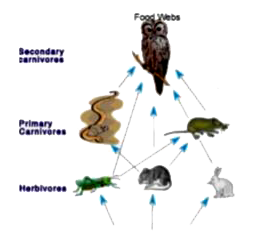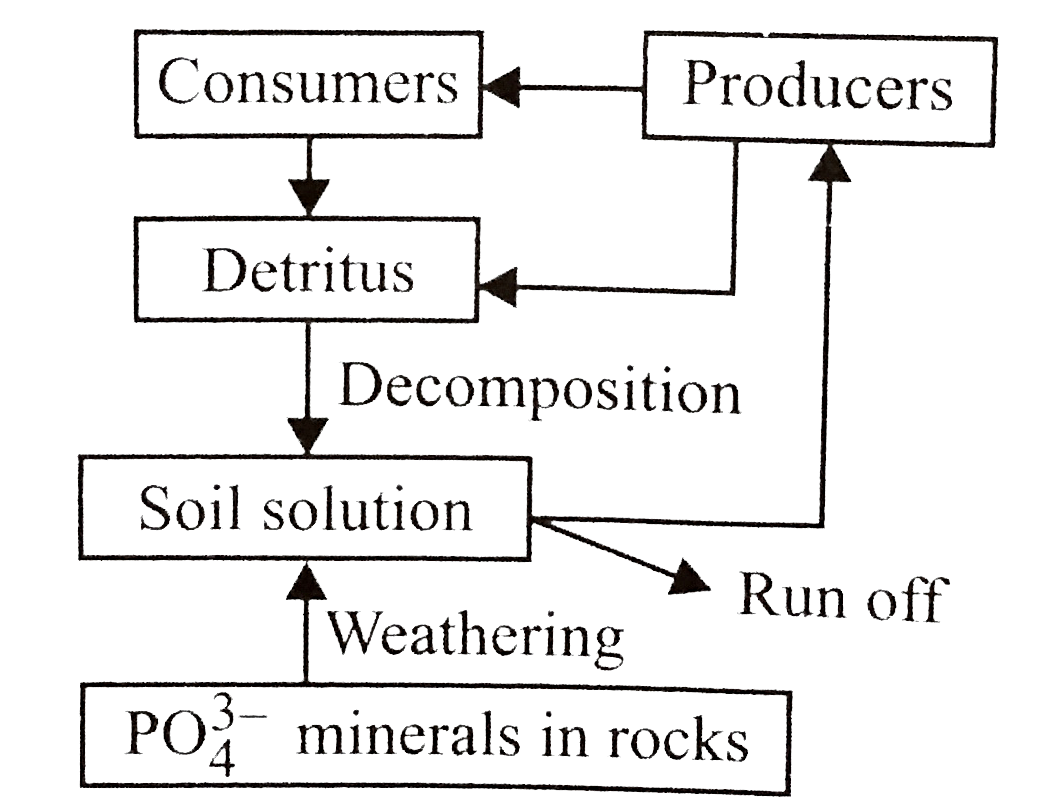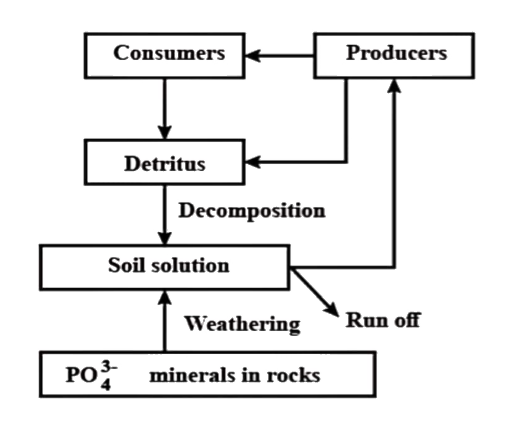In a terrestrial ecosystem,
A similar proportion of energy flows through the grazing food chain as compared to the detritus food chain.
A smaller proportion of energy flows through the detritus food chain as compared to grazing food chain.
Equal proportion of energy flows through detritus food chain and grazing food chain
No energy flows through detritus food chain and grazing food chain.
The correct Answer is:A
To solve the question regarding energy flow in a terrestrial ecosystem, we need to analyze the given options based on our understanding of food chains and energy transfer.
1. Understanding Food Chains:
- In a terrestrial ecosystem, there are two main types of food chains: the grazing food chain and the detritus food chain.
- The grazing food chain consists of producers (like plants) that are consumed by herbivores (primary consumers), which are then consumed by carnivores (secondary and tertiary consumers).
- The detritus food chain involves the breakdown of dead organic matter by decomposers (like bacteria and fungi) and detritivores (like earthworms).
2. Energy Flow in Food Chains:
- According to the 10% rule of energy transfer, only about 10% of the energy from one trophic level is transferred to the next level. The rest is lost as heat.
- This principle applies to both the grazing food chain and the detritus food chain.
3. Analyzing the Options:
- Option 1: "A similar proportion of energy flows through the grazing food chain as compared to the detritus food chain."
- This statement is correct because both chains follow the same energy transfer principle, losing approximately 90% of energy at each trophic level.
- Option 2: "A smaller proportion of energy flows through the detritus food chain as compared to the grazing food chain."
- This statement is incorrect because the proportion of energy flow is similar in both chains.
- Option 3: "Equal proportion of energy flows through detritus food chain and grazing food chain."
- This statement is misleading; while the proportion is similar, it is not equal due to the 10% energy loss.
- Option 4: "No energy flows through detritus food chain and grazing food chain."
- This statement is incorrect as both food chains do facilitate energy flow.
4. Conclusion:
- The correct answer is Option 1: "A similar proportion of energy flows through the grazing food chain as compared to the detritus food chain."
- In a terrestrial ecosystem, there are two main types of food chains: the grazing food chain and the detritus food chain.
- The grazing food chain consists of producers (like plants) that are consumed by herbivores (primary consumers), which are then consumed by carnivores (secondary and tertiary consumers).
- The detritus food chain involves the breakdown of dead organic matter by decomposers (like bacteria and fungi) and detritivores (like earthworms).
- According to the 10% rule of energy transfer, only about 10% of the energy from one trophic level is transferred to the next level. The rest is lost as heat.
- This principle applies to both the grazing food chain and the detritus food chain.
- Option 1: "A similar proportion of energy flows through the grazing food chain as compared to the detritus food chain."
- This statement is correct because both chains follow the same energy transfer principle, losing approximately 90% of energy at each trophic level.
- Option 2: "A smaller proportion of energy flows through the detritus food chain as compared to the grazing food chain."
- This statement is incorrect because the proportion of energy flow is similar in both chains.
- Option 3: "Equal proportion of energy flows through detritus food chain and grazing food chain."
- This statement is misleading; while the proportion is similar, it is not equal due to the 10% energy loss.
- Option 4: "No energy flows through detritus food chain and grazing food chain."
- This statement is incorrect as both food chains do facilitate energy flow.
- The correct answer is Option 1: "A similar proportion of energy flows through the grazing food chain as compared to the detritus food chain."
Topper's Solved these Questions
Similar Questions
Food chains are very important for the survival of most species

If 10,000 J solar energy falls on green plants in a terrestrial ecosystem, what percentage of solar energy will be converted into food energy?
View SolutionName the type of food chains responsible for the flow of larger fraction of energy in an aquatic and a terrestrial ecosystem respectively. Mention one difference between the two food chains.
View Solution
Knowledge Check
Read the following statements and select the correct statements.
(i) DFC begins with dead inorganic matter.
(ii) DFC is the major conduit for energy flow in a terrestrial ecosystem
(ii) GFC of aquatic ecosystem is longer than a terrestrial ecosystem.
(iv) DFC and GFC are completely separate chains.A(i) and (ii)B(ii) and (iii)C(iii) and (iv)D(i) and (v)Go through the statements.
A. In terrestrial ecosystem, maximum energy is present in T1.
B. In grassland ecosystem, the pyramid of biomass is upright.
C. In pyramid of food, the producers occupy the base / bottom.
D. Energy flow in an ecosystem is bidirectional.
E. If all green plants of earth are destroyed, all animals shall die ultimately.
F. The typical biome of an area having 50 to 100 cm of rainfall is grassland. How many of the above statement(s) is wrong?A1B2C3D4Study the given flow chart and select the correct statement regarding this.

(i) It represents phosphorus cycling in a terrestrial ecosystem.
(ii) It represents phosphorus cycling in an aquatic ecosystem.
(iii) Natural resenvoir of phosphorus is phosphate rocks.
(iv) There is no repiratory release of phosphorus into atmosphere.
(v) Gaseous exchange of phosphorus between organisms and enviornment occurs to a considereable extent.AI,ii and vBI,iii and ivCii,iii and ivDI,iii,iv and v
Given below is a phosphorus cycle. Select the incorrect statements from the following:

(i) It represents phosphorus cyclic in an aquatic ecosystem.
(ii) It represents phosphorus cyclic in a terrestrial ecosystem.
(iii) The natural reservoir of phosphorus is forest ecosystem.
(iii) The natural reservoir of phosphorus is forest rocks.
(iv) There is a respiratory release of phosphorus into the atmosphere.
(v) Gaseous exchange of phosphorus between organisms and the environment does not occur.
View SolutionIn terrestrial ecosystem maximum energy is present in
View SolutionExample of man made terrestrial ecosystem is
View SolutionHow much of the net primary productivity of a terrestrial ecosystem is eaten and digested by herbivores?
View SolutionHow much of the net primary productivity of a terrestrial ecosystem is eaten and digested by herbivores ?
View Solution
